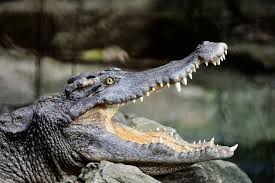The Chilean Dolphin, scientifically known as Cephalorhynchus eutropia, is a fascinating marine creature indigenous to the coastal waters of Chile. Often recognized by various names in different languages, this small and elusive dolphin species captivates interest with its unique characteristics and behaviors. As we delve deeper, we’ll explore the intriguing world of the Chilean Dolphin, shedding light on its habitat, behavior, and the challenges it faces in its natural environment.
Physical Characteristics
- The Chilean Dolphin, also known as the Black Dolphin, is a relatively small species with an average length of 1.7 meters for males and 1.6 meters for females.
- When it comes to weight, they generally range between 60 to 85 kilograms, making them lighter than their larger cousins like the bottlenose dolphin.
- One of the unique features of the Chilean Dolphin is their rounded, robust body with a proportionately large dorsal fin and short beak, which sets them apart from other dolphin species.
- They also have an unusual color pattern, with darker shades on the back and sides and lighter shades underneath.
- A common misconception about the Chilean Dolphin is that they are often mistaken for baby killer whales due to their coloration and rounded dorsal fin. However, upon closer inspection, their size and facial features clearly differentiate them.

Habitat and Distribution
- The Chilean Dolphin, also known as the Black Dolphin, primarily inhabits the marine region stretching from Valparaiso to Cape Horn, along the Chilean coast.
- This species of dolphin displays a strong preference for cold, shallow coastal waters, often found frolicking near the sea surface.
- Specific habitats of the Chilean Dolphin include bays, channels, and river mouths, where they can find an abundance of prey.
- These dolphins are highly social and can often be found in groups or pods of up to 10 individuals.
- Their range may extend further north into Peru and south into Argentina, but sightings in these areas are less common.
- **The Chilean Dolphin is a relatively small species, growing up to 2 meters in length and weighing between 60 and 100 kilograms.
- They have a distinct black or dark gray coloration, with a lighter underside.
- Their sleek bodies are well-adapted for swimming in open waters and their dorsal fin is triangular and pointed, unlike the curved fin of other dolphin species.
- These dolphins are apex predators, feeding on a variety of fish, squid, and crustaceans
Related Post :Spinner Dolphin Behavioral Adaptations
Threats to the Chilean Dolphin
- Historical hunting for bait and current threats: Historically, the Chilean Dolphin was hunted extensively for use as bait in crab and fish traps. Although this practice has significantly reduced, illegal hunting still poses a considerable threat to the species.
- Incidental entanglement in fishing gear: The Chilean Dolphin often gets ensnared in fishing nets, leading to injury and often death. This bycatch is accidental but has significant impacts on the population.
- Habitat alteration due to intensive human activities, particularly aquaculture farming: Human activities, especially aquaculture farming, are transforming the dolphin’s marine habitat. These changes can result in a loss of available prey, forcing the dolphins to relocate or face starvation.
- Impact of coastal set nets used in salmon farming: Set nets used in salmon farming are another major threat to the Chilean Dolphin. These nets can entangle the dolphins, leading to suffocation and death. Ensure these nets are dolphin-friendly is a critical step towards safeguarding this species.
Population and Distribution
- Population Estimates: There’s significant uncertainty surrounding the exact population figures of the Chilean Dolphin. Limited data and the species’ elusive nature make it challenging to obtain precise counts.
- Endemic Nature: The Chilean Dolphin is endemic to the chilly waters off the coast of Chile. This species has adapted to thrive in this specific habitat and is seldom found elsewhere.
- Limited Migration: Unlike many dolphin species, the Chilean Dolphin exhibits limited migration patterns. They are typically found in the same regions year-round, often within close proximity to the shore.
Conservation Status
- Conservation Status: The Chilean Dolphin, also known as the Black Dolphin, is currently designated as “Near Threatened” on the IUCN Red List. This classification indicates that the species may be considered threatened with extinction in the near future, unless the circumstances threatening its survival and reproduction improve.
- Population decline and estimated numbers: Over recent years, there has been a noticeable decline in the population of the Chilean Dolphin. Although precise numbers are difficult to ascertain due to the elusive nature of this species, estimates suggest a significant reduction in population size.
- Inclusion in CMS and CITES Appendices: The Chilean Dolphin is included in both the Convention on Migratory Species (CMS) and the Convention on International Trade in Endangered Species of Wild Fauna and Flora (CITES) appendices. These inclusions denote global recognition of the dolphin’s vulnerable status and establish international cooperation to protect the species.
- Conservation Efforts: To address the declining population of the Chilean Dolphin, conservation efforts have been put in place. These include research and monitoring programs, as well as measures to protect their habitat from pollution and other human activities. Additionally, there are ongoing efforts to raise awareness about this species and its importance in maintaining a balanced marine ecosystem.
Behavior and Reproduction
- Shy Nature and Challenges in Observation: The Chilean dolphin, also known as the Black Dolphin, is notoriously shy and elusive, making it a challenging subject for scientific observation. Their small size and swift, unpredictable movements complicate efforts to study them in their natural habitat.
- Group Dynamics and Social Behaviors: Chilean dolphins are known to exhibit complex social behaviors. They typically live in small groups, although larger aggregations have been observed. Some groups display cooperative behaviors such as synchronized swimming and coordinated hunting.
- Limited Understanding of Reproductive Habits and Sexual Maturity: Our understanding of the Chilean dolphin’s reproductive habits remains limited due to the species’ elusive nature. However, from the limited observations and studies conducted, it is inferred that they reach sexual maturity at a later stage compared to other dolphin species.
Diet and Feeding Habits
- Carnivorous Diet: The Chilean Dolphin primarily exhibits a carnivorous diet. This means its food intake mainly consists of meat from other creatures, including a variety of fish species, cephalopods, and crustaceans.
- Opportunistic Hunting Behaviors: These dolphins display opportunistic hunting techniques. They take advantage of any opportunity to catch and consume their prey, rather than relying on a specific hunting pattern or specific types of prey.
- Prey Selection: The Chilean Dolphin’s diet is robust and diverse. They consume a range of prey including squat lobsters, Patagonian squid, and a variety of fish species. This varied diet allows them to adapt to changing food availability in their environment.
Conclusion
- The Chilean dolphin, with its distinctive small size, rounded body, and large dorsal fin, stands out from other species. It is one of the smallest and least known dolphin species, largely confined to the cold, nutrient-rich waters off the coast of Chile.
- Despite their unassuming nature, Chilean dolphins face significant threats. Commercial fishing practices often result in these dolphins being caught as bycatch, severely impacting their population numbers. Additionally, habitat degradation due to human activities poses a major challenge to their survival.
- While current research has provided valuable insights into the life and behaviors of the Chilean dolphin, much remains unknown. Continued scientific exploration is critical to fully understanding this unique species and developing effective conservation strategies.
- There is a pressing need for conservation efforts to protect the Chilean dolphin. Given the species’ vulnerability to human activities, it is crucial that regulatory measures are implemented and enforced to mitigate their impact.
- In the grand scheme of biodiversity, the Chilean dolphin represents a unique piece of our planet’s intricate ecological puzzle. Their protection is not just about the survival of a single species, but about maintaining the balance of our global ecosystem.




